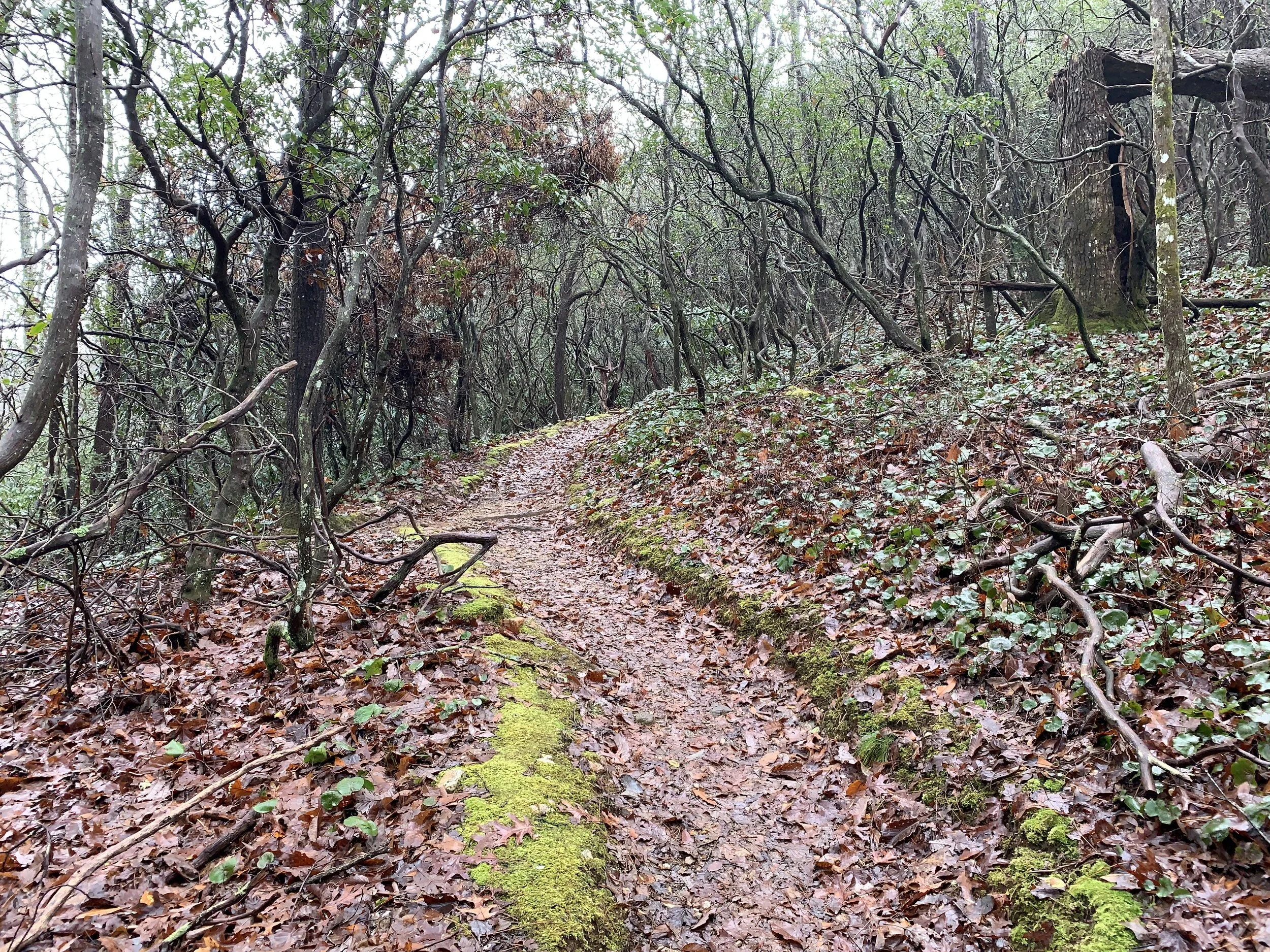Winter Backpacking Training
In general, my backpacking season here in Georgia runs from March to June and then picks back up in late September until November.This strategy avoids the heat of summer which can make sleeping outside unbearable - there is only so much clothing you are allowed to take off even in the woods.I’m planning to see if higher elevation trips in the summer might make it a possible to enjoy the outdoors at a reasonable temperature.
Rare nice day this winter from the top of Tray Mountain
Winter is problematic. It does get cold - anything in the lower than the mid 40’s in the day add a level of concern to my mental checklist. Though what concerns me is the wet. Southern winters tend to be rainy and that rain can be long lasting. This year was one of those years were it would rain for a week or two straight. It might not be pouring but it was always misting. That moisture does two things that concern me. The first is it just saturates the trail and everything around it. Rock, leaves, roots, and the ground itself are slick and increase the risk of injury and also damage to the trail itself. The more concerning is that you just get soaking wet. Not matter what you do, you will get wet either from moisture in the air or the sweat you are producing and there is no way to dry out. Hypothermia becomes a real concern. For that reason, I only got one or two day hikes in this winter and no backpacking trips.
In order to be able to hit the trails and do the mileage I wanted to do as soon as the weather improved, I built an indoor training regiment. Even though the best training for hiking is actual hiking, I knew I wanted to improve my cardio. Climbs have been one of my limiting factors with backpacking and I wanted to be able to keep an overall lower heart rate with a faster recovery time. To this end, I started doing more zone two training which strengths cardio system without injury inducing stress and fatigue. Zone two for me is around 120-140 BPM which feels like you aren’t doing much work but that is kind of the point. I switched out between jogging /running on the treadmill and cycling on an indoor trainer. All of this has been done on a virtual training platform called Zwift which has turned this chore into something enjoyable. Mixed in with this was some sprints to surge the heart rate, build anaerobic capacity, and simulate the stress of a hard climb.
So has it work? I did a 16-17 mile day hike last weekend with a fully loaded pack with total elevation gain of 3192 feet and felt pretty good. There weren’t any long climbs but overall, I am happy with the results and will keep parts of the indoor training during the week but add in evening 5-7 mile hikes a couple times a week.






